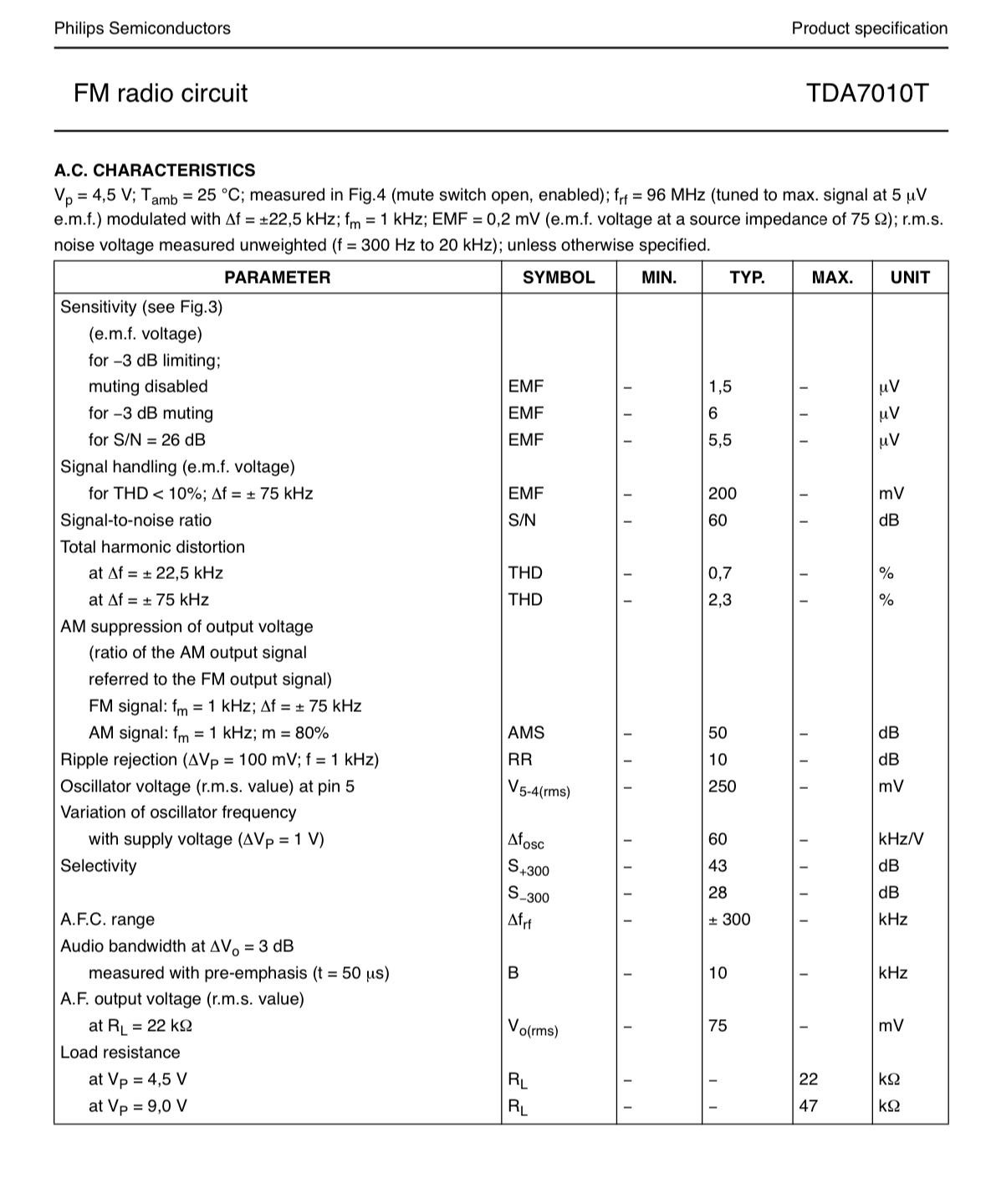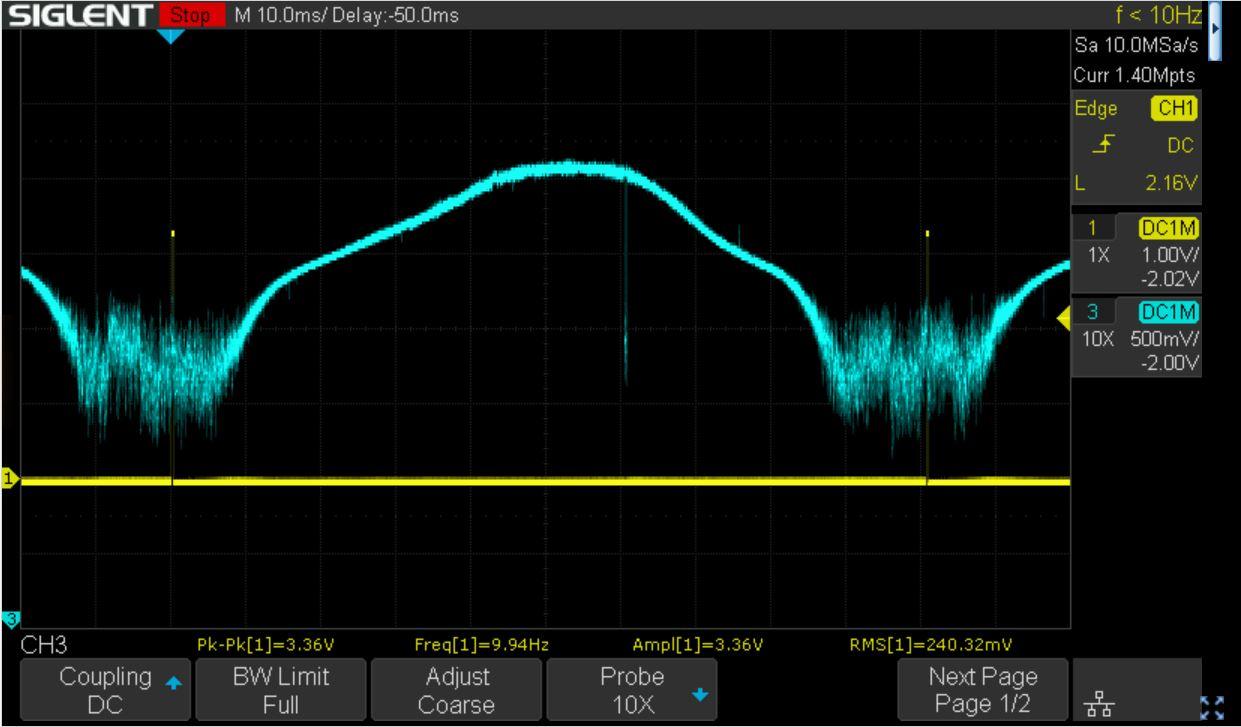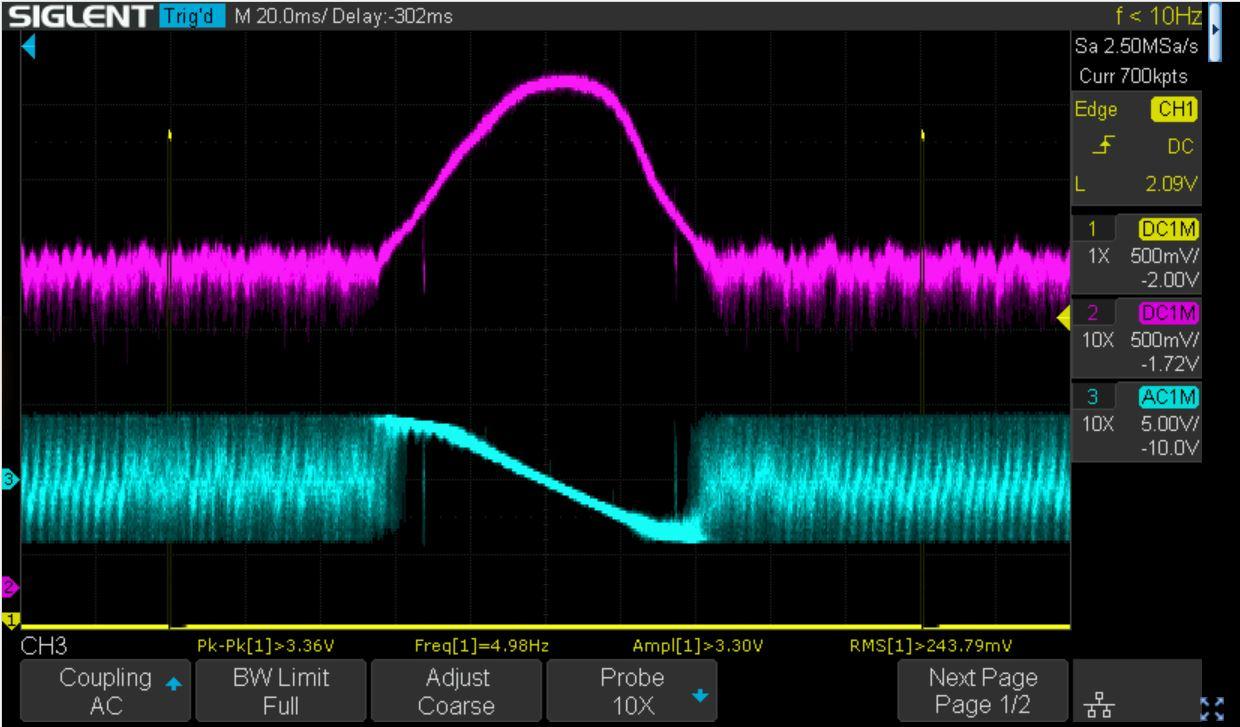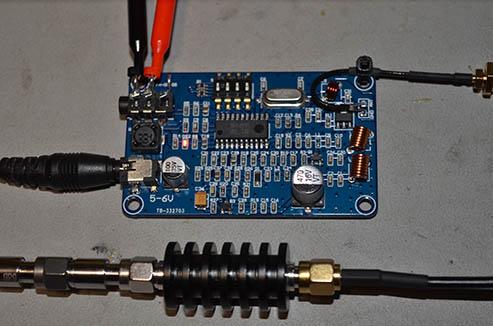Home › Forums › General Discussion & Questions › Strategy for Changing Capacitors and Trim Pots on FM Tuner
- This topic has 16 replies, 4 voices, and was last updated 1 year, 11 months ago by
Glitch.
-
AuthorPosts
-
27 September 2022 at 07:05 #39350
I would like to hear people’s thoughts on changing out capacitors and trim pots on something like a working FM tuner board. Specifically, what to do when one doesn’t have the specific equipment to follow the adjustment procedures in the service manual.
1) Do nothing. The FM is working OK, don’t fix what is not broken
2) Change just the capacitors. The capacitors are old and will eventually fail. Don’t tempt fate by changing the trim pots.
3) Change the capacitors and trim pots. They are both old and have either failed or will fail.
3a. Change only the trim pots for functions that one has the equipment to test/adjust the pot settings
3b. Change all of the trim pots. Measure the resistance between legs of each of the old ones and set the new ones to match.
3c. Change all of the trim pots. Set the “pointer” on the new pot to match the old one.
3d. Some combination of a, b, c
What do you normally do and what is your rational for doing it?
Glitch
( I know I forgot choice 4) If you have to ask, you probably shouldn’t be doing this 😉 )
27 September 2022 at 21:54 #393511. Possible.
2. Possible.
3. Not possible without the proper instruments for setting the trimmers.
3a. Possible.
3b. One of the worst things you could do.
3c. Worse than 3b.
4. Asking never hurts.Don’t forget:
5. Get the proper instruments and learn how to do it right yourself.
6. Leave the alignment to someone who can do it.In your case, respectfully keeping 4 in mind, I’d say 6 would be the cheapest and fastest way, and you will end up with a good result.
Martin
28 September 2022 at 01:00 #39352Martin,
Thank you for your sage advice.
Your reply is pretty much what I suspected. I had to ask in case the settings of the trim pots were far less critical than what I expected. With old equipment it is sometimes hard to judge which is the lesser of two evils, old worn out parts versus new out of spec parts.
My game plan is to stick with “1” if there are not issues, then maybe try “2”. I’ll research what is needed for “5”. My bench equipment most likely falls into two categories, too new (modern digital with all of the digital issues) or too old (like vacuum tube old, my wife’s grandfather’s test equipment). My gut feel is this is a job for quality analog equipment(?)
I’m not too sure if “6” is really an option. One of the reasons that mothballed the stereo equipment years ago is that all of the really good electronics technicians that I knew either retired or otherwise closed down shop. Besides, option “5” sounds like more fun.
The strange thing is that I really have no interest to listen to FM (same goes for cassette tapes). I just like the idea of having nice, vintage stereo equipment that is fully functional.
Glitch
28 September 2022 at 15:17 #39353Radio alignment is difficult and requires a lot of experience, even with the proper tools.
I for one won’t touch it with a barge pole ☺️
The only thing I do is the adjustment of 19 kHz frequency.
28 September 2022 at 15:34 #39354Isn’t most of the “alignment” done with the variable inductors?
My assumption is that these don’t “go bad” and are (very much) to be left alone. Is that true?
Glitch
Note: It is probably obvious that I don’t have ANY experience with messing with the tuner sections. I do have general, theoretical, engineering knowledge and can follow along with most topics.
28 September 2022 at 17:21 #39355They can’t go bad but resistors and caps may change values and re-alignment required anyway, even when the device has never been touched. Sometimes especially if the tuner was never revised!
Some tuners never get misaligned though, and that’s impressive. I have a Beomaster 5000 (1967) that still has its original components and settings and it works perfectly.
I bought two FM3’s of the same period, one had its IF completely out and the other was still perfectly aligned. That’s pretty unpredictable.
Now some designs rely more on trimpots than others.
4 October 2022 at 19:40 #39356I have looked around for the equipment needed for working on the FM tuners. I originally started looking at used, professional grade equipment. I found myself gravitating towards the equipment that we had in our electronics lab at work in the 1980-1990’s time-frame. Though this equipment has dropped significantly in price since new, most of it is still out the price range that I would want to spend for this project. Additionally, I have the usual concerns about the operating state of such old equipment.
While researching FM tuner repair and alignment, I came across a device that might fit my needs. It is called a “TinySA” (https://www.tinysa.org). This appears to be able to generate the signals that I would need. Does anyone have experience with this piece of equipment? If so, would a TinySA and a 200 MHz scope be sufficient to do the basic adjustments?
chartz: I was reading some old posts in the Beoworld archives. Did you ever get your BM8000 to tune to the higher frequency stations?
Glitch
4 October 2022 at 20:15 #39357Oh yes, this was solved and documented!
You’ll need more than an oscilloscope, like a HF generator, a distortion meter…
4 October 2022 at 21:33 #39358The TinySA can generate signals in the FM frequency band with various modulations, as well as sweeps. I can compute FFT’s with my scope which should give an idea of the distortion?
Glitch
5 October 2022 at 05:35 #39359Oh good! I read too quickly. All-in-one then. This thing is incredibly cheap. Have fun and share!
10 October 2022 at 17:18 #39360The TinySA seems to be a pretty capable device, especially considering the price. It has its quirks and limitations, but I’m hoping that I can work around them.
I am having trouble understanding exactly what setup is be specified in the service manual. My (possibly incorrect) interpretation is that they are calling for a settings on a specific piece of unnamed equipment. I think I understand what they are trying to accomplish, but might be getting hung up on the nomenclature. For example, in the service manual…
The 94 MHz and 1 mV part is clear. Is the voltage amplitude, peak-to-peak or RMS? Does “EMF +-75kHz” refer to a injecting a wide band FM modulation onto the signal or is it just a tolerance? The term EMF is confusing since it means electromagnetic field to me. But that interpretation would have different units.
I’ve been searching the web for information on setting up FM tuners, but most of what I’ve found doesn’t seem to be applicable. Please let me know on any good resources that you are aware of.
It is clear to me that I have a lot to learn and that the learning curve is steep.
Glitch
11 October 2022 at 06:07 #39361To me it’s the precision delta too yes. It would a very tiny tolerance in this case!
Found this:
11 October 2022 at 14:42 #39362Good idea to look at the chip spec sheet for clues.
I did some more reading and EMF likely refers to electromotive force. I think that last time I heard that term used was a very, very long time ago in college. It isn’t clear to me why it is being stated in that way. My best guess is that they are trying to indicate making a measurement on a signal generator with a low impedance built-in load with a high impedance measuring device (i.e. without a 50 ohm load at the scope)?
The spec sheets may have provided a clue to another question that I had. Which aerial input to connect the signal generator, the 300 ohm or 75 ohm? Seems like the 75 ohm is the proper one(?).
I’ve been playing with the TinySA to get a feel for how it performs. So far, the settings on the TinySA match what I measure on my scope. I still need to work out ways of measuring what I need with the equipment that I have. For example, I don’t have anything that can measure a 10 uV signal in the MHz frequency range. I think the many of the measurements that I need to make will have to be done indirectly.
Glitch
16 October 2022 at 18:01 #39363I’ve made some progress with my quest to properly set-up FM tuner boards. I decided to experiment on the the tuner from my most beat up BM6000 (~5.5 of 1o condition). This receiver seems to be becoming my “parts machine” (or garage machine) as the best parts slowly migrate to my nicer machines. If I am successful with this experiment, I’ll use what I learn in the restoration of the nicer BM6000’s and BM8000’s.
I’ve worked through replacing all of the capacitors and most of the trim pots. I replaced only the trim pots related to a specific adjustment in the service manual at a time. I noted the settings of the old trim pots and checked/documented the “before” measurements of the circuit. For some of the measurements, I tried tweaking the old trim pots to learn the effects before replacing them. I skipped the steps that involved adjusting the inductors.
In general, I was able to make measurements and adjustments that “seem” like they are correct and consistent with what I’ve researched online. However, I don’t have the experience to know for sure if they are actually right.
Tuner/IF Adjustment: Using the TinySA and an oscilloscope, this is what I got for a IF curve.
Here is the “before” capture with the OLD trim pots at the LOW end of the frequency band, 85.5 MHz. I don’t have an “after” capture for this since this measurement is adjusted only with inductors.
Here is the “before” capture with the OLD trim pots at the HIGH end of the frequency band, 108.0 MHz.
Here is the “after” capture with the NEW trim pots at the HIGH end of the frequency band, 108.0 MHz.
I was able to see the amplitude of the IF curve change as I moved each trim pot and adjusting to a point where it peaked seems to make sense. I wasn’t able to change the symmetry of the curve significantly. I did note that the “centering” of the IF curve was sensitive to the tuning knob position. I tried to position the knob half-way between where the display changed between 0.1 MHz below and 0.1 MHz above the intended frequency. I don’t know it was the right thing to do.
When I did these adjustments, I did not pay much attention to the “blip” near the center of the IF curve. I originally just thought it was an anomaly (random noise) in my setup. This may actually be a feature of the TinySA and be a “marker” at the center of the sweep. Unfortunately, the documentation for the TinySA is sparse and the firmware is still somewhat fluid, so some educated guessing is needed. I have some more research to do here.
If the “blip” is a center marker, would it make sense to center the marker with the tuner knob, then try to adjust for symmetry with the trim pots?
Another area that I have questions relates to an earlier question about the “mV EMF” level. I noted that some of the settings seems to be pretty robust to the input signal level. Other settings, like the “AGC” and “Opening of the Stereo Decoder” were sensitive to the input signal level. I think that the interpretation of the meaning of Vac is what is messing me up, or at least is adding to the error. There is a 3 dBm difference between Vrms and Vpeak, and 9 dBm between Vrms and Vp2p. Any comments on how this should be interpreted would be appreciated.
How I handled this was to note the signal level needed to get the correct voltage measurement with the old trim pot, then initially set the new trim pot to match. Afterward, I then played around with resetting the voltages based on a Vrms assumption of the signal level. I am not very confident that this is giving me a 100% correct setting.
In general, the FM tuner successfully receives stations and sounds similar to what it did before I installed the new parts and readjusted. Some aspects of the sound quality actually seem slightly improved. However, I still don’t think that it is exactly right. On some stations, on particular songs, there seems to be a slight fuzziness or distortion. I’ve also noticed this on one of my other tuners (that I haven’t touched). Any ideas on what I could be experiencing?
Glitch
As a side note, I tried experimenting with using the “3C” method from the original post. For some of the measurements, it provided a results that were pretty close to the final setting. The FM would “work” but could easily be improved with a proper adjustment.
Here is my 108 MHz IF curve with setting R1-R4 with the “3C” method.
I think that I actually just got lucky with this result. I tried to see if the procedure was repeatable and the second time was an epic fail.
19 October 2022 at 08:31 #39364Fascinating stuff……I have always thought it best to shy away from this subject due to the test equipment required and also the expertise required to perform it, but would love to learn more and explore the use of the TinySA piece of kit, I do have a BM4400 that has a less than perfect reception.
Craig
19 October 2022 at 17:12 #39365Craig: I’m pretty happy with the TinySA. It has already provided me sufficient amusement for how much I spent on it. It seems like most of the people using it are HAM radio enthusiasts. But there also seems to be many people trying to adapt it to other, more imaginative, uses. The author of the TinySA software seems to embrace the “alternative usage” and tries to accommodate with patches and Easter eggs. I’m still not 100% sure of the TinySA’s suitability for what I’m trying to use it for. I keep seeing the advice on various websites to buy the “proper equipment” for the job, but it is still not clear to me what the “proper equipment” actually is, or if it can be obtained for a price that I’m willing to pay.
I keep having the the thought that “this would be so much easier if I knew what I was doing” ;-). I’ve found there to be a simultaneous “information vacuum” and preponderance of information relative to this subject matter during my web searches. I’ve been struggling to find information relevant to the tuner design that my particular Beomasters have. I guess the best I can hope for is to plod-on with my experimenting and try to stumble upon a method that gives acceptable results.
On a more positive note, I did make progress on interpreting the “markers” that are on the sweep traces. It looks like the TinySA injects a marker at the ~320kHz and ~640kHz points during the sweep. I set my total sweep to 960kHz so the markers are even. I’m not sure why the TinySA uses these particular values or what the utility of the markers are, but at least it is clear when they are happening.
Glitch
29 October 2022 at 01:03 #39366I’ve been able to do a full adjustment of the FM tuner on a BM6000. I more or less gave up on trying to follow the exact directions in the service manual since it was not clear to me how to translate things like the signal levels, etc. to the equipment that I have. Instead, I used the service manual as a guide, along with the schematics, theoretical descriptions of FM tuner operation, and (better) explanations from service manuals for other (non-B&O) equipment to interpret the “spirit of the adjustment”.
To relate the signal levels to my equipment, I made measurements of the other four Beomasters that I have that (I think) still had their original adjustments. I took notes and used the trends from the sample set to setup the tuner that I replaced the caps and trim pots on. This was a bit challenging since all four tuners were setup somewhat differently.
My newly adjusted tuner now sounds as good as the best of the other tuners and quite a bit better than the worst of the other tuners. I have no idea if it is actually adjusted “to specification”. It sounds “good enough” that any misadjustment isn’t readily noticeable.
I was able to do most of the adjustments with a digital oscilloscope, a multimeter, a TinySA, and a handful of attenuators. I needed one other piece of equipment to set the Channel Separation. The service manual called for a stereo encoder. I used a cheap FM transmitter, a waveform generator and attenuators to get the signal down to a proper level.
I’m happy with the results. I’m happier that I didn’t have to spend more than the receiver is worth on equipment to fix the receiver.
I still want to refine and improve my adjustment procedure. One of the things I still don’t understand is what they are trying to convey in this paragraph of the manual
What “signal” do they mean in the 2nd harmonic section and what is one supposed to adjust to get the correct waveform?
Glitch
-
AuthorPosts
- You must be logged in to reply to this topic.
















